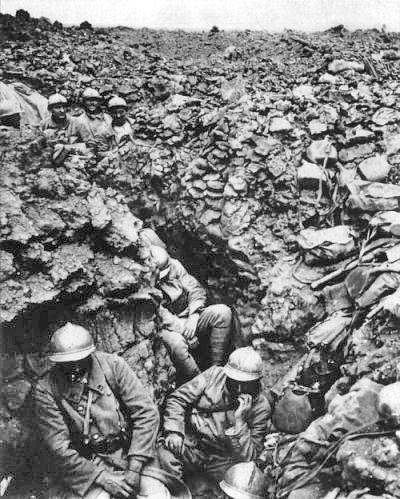Perceived primarily from a Polish perspective as an event that resulted in the restoration of independence, the First World War has a completely different historical memory in Western European societies. The Battle of Verdun, which lasted almost the whole of 1916, is regarded as a symbol of the end of the Belle Époque and the “suicide of Europe”. It was a bloody positional battle that proved futile for both sides.
For the first time, the seizure of Verdun, a small French town close to the German-French border, was already planned by the Central Powers (Germany and Austria-Hungary and their allies) in 1914. At that time, however, the Entente, i.e. France, Britain and Russia and the allied states, halted the German offensive on the Marne River. The attempt to seize Verdun following the offensive at Artois in 1915 also failed.
Again, the Germans returned to the idea of attacking the fortress of Verdun in late 1915. Its capture was the goal of General Erich von Falkenhayn (1861-1922). His plan was to devastate the French army and deprive it of its reserves, so that France would have to withdraw from the war. Its capitulation would in turn force the British expeditionary corps to withdraw to the Isles.
The forces stationed at Verdun, despite warnings from French intelligence and the commander of the troops there, were not regularly reinforced; this was only done at the last minute before the attack. Although the town was difficult to capture, its location also had some disadvantages. The River Meuse flowing through Verdun divided the fortress into two points of resistance, each of which could be attacked from two sides at once. If the German attack was successful, the French and British forces stationed at Verdun would be separated.
The attack began on 21 February 1916, preceded by nine hours of heavy artillery fire. This was followed by an attack which resulted in the Germans taking the Haumont-Caures-Herbebois section by 22 February. On 24 February, German troops captured the Samogneux-d’Anglemont-Beaumont line and several smaller points of resistance, but further attacks were halted. Captured on 25 February, Fort Douamont became the main centre of fighting and changed sides. The initial assault ended on 4 March. The French were forced to withdraw from the Talou hills.
The next German attack, made on both banks of the Meuse, was not as successful as the first assault. On the right bank, the Germans suffered defeat, while on the left they managed to take the Oie hill and the Cumieres forest, as well as the hill No 264 and the forest near the village of Avacourt.
The next phase of the battle began at the end of March and lasted about a month. Initially, the French managed to retake some of the area lost on the left bank of the Meuse. However, following an attack launched on 30 March, the French retreated, and the Germans took the towns of Malancourt, Haucourt and Bethincourt. On the right bank of the river, after initial success, the Germans returned to their starting positions. The April offensive also failed to make any significant difference.
The solstice, which eventually led to the expulsion of the Germans after several months, occurred in July. In September, the Germans ceased their attacks completely, but only by the middle of December did the French regain the territory they had occupied before 21 February. The failure of the attacks resulted in Falkenhayn’s resignation from his post as Chief of the German General Staff.
Poles serving in the German army also took part in the Battle of Verdun. They were scattered in German units not in one Polish group.
On the French side, the troops at Verdun were commanded by Philippe Pétain (1856-1951) and Robert Nivelle (1857-1924). The former played a special role in the battle. Pétain, who shortly after the attack became commander of the 2nd Army including the troops from Verdun, decided to introduce changes to prevent the defence line from being broken. His system, which came to be known as the ‘wheel’, allowed for better use of retreats, which changed line units. The commander also improved the transport of supplies, the evacuation of the wounded and the entry of new troops. In addition, he strengthened the defensive points and started the construction of a crossing over the Meuse, making it difficult to separate his subordinate troops.
The positional battle, which had little effect on the situation at the front, made a devastating effect on the morale of the soldiers, who bled in the trenches for months. Especially as both sides used the then state-of-the-art solutions, such as battle gases and machine guns. The battle became known as the ‘Hell of Verdun’ and shocked European public opinion. It is regarded as one of the causes of the change in both German and French mentality. The press of the time stressed that after the war, the cultural principles of Europe known from la Belle Epoque would not return. The senseless battle also caused the reluctance of French society to defend its homeland, which bore its bitter fruit at the start of the next world war. The German commanders who easily occupied Verdun during the French campaign in the summer of 1940 regarded that victory as a good omen.





